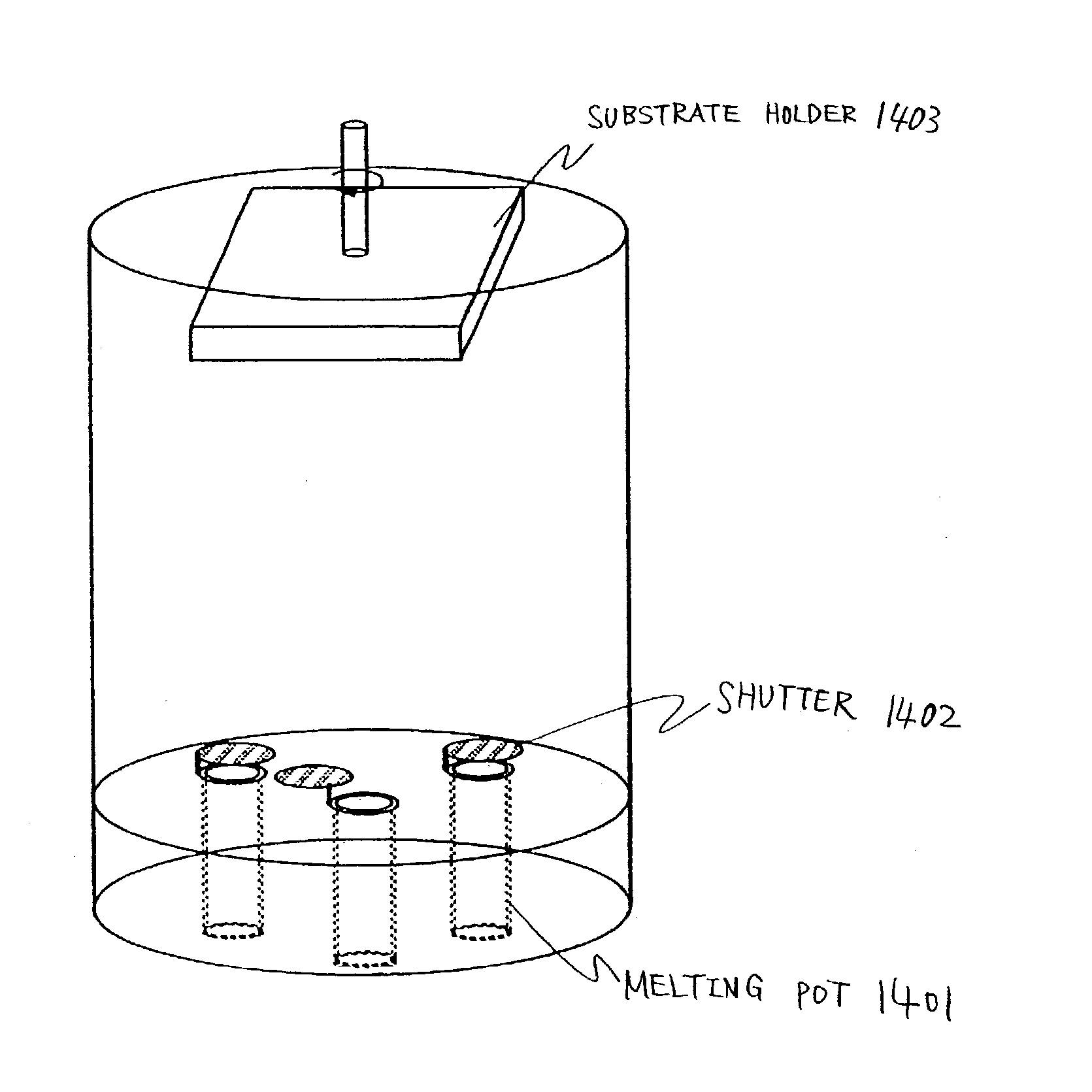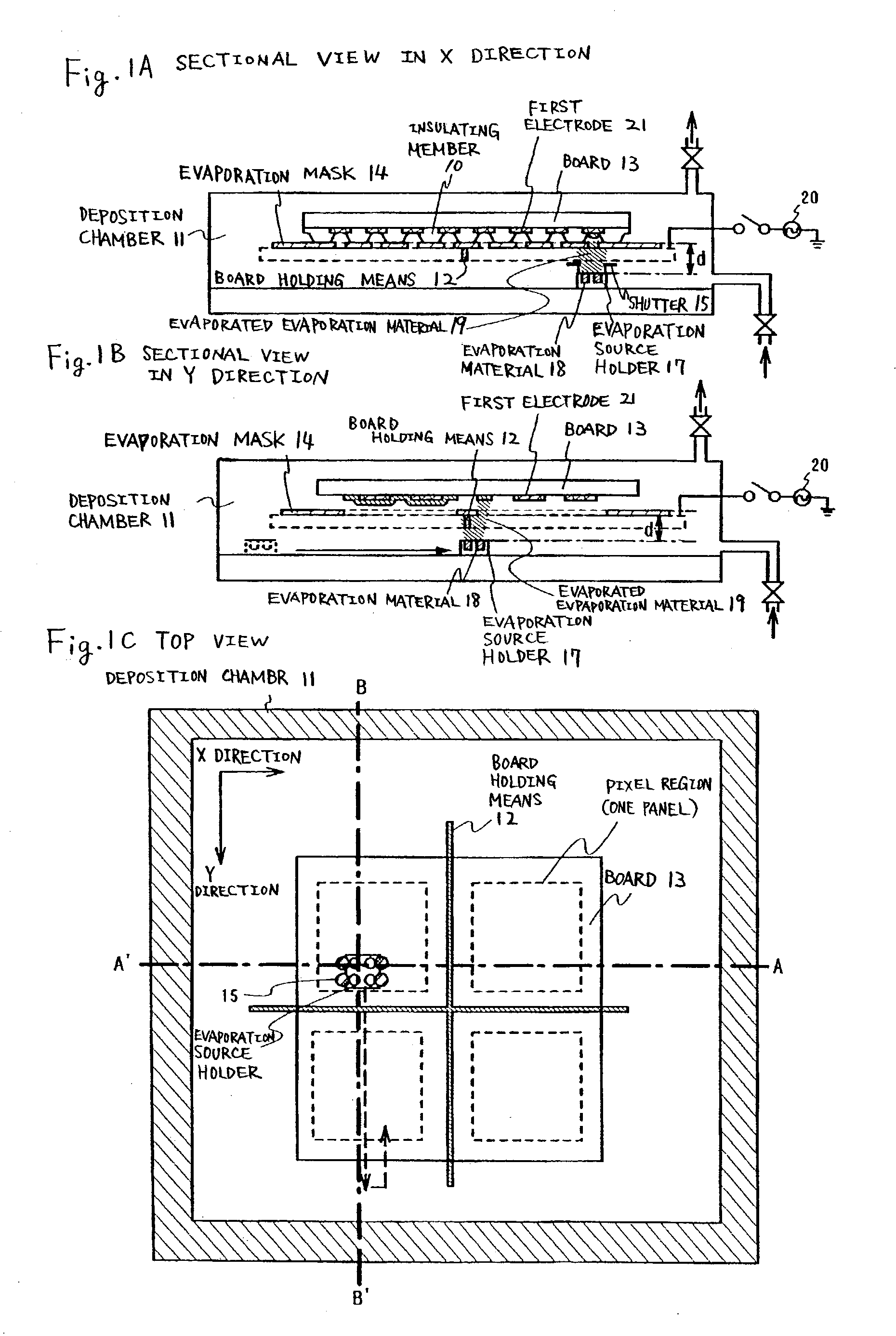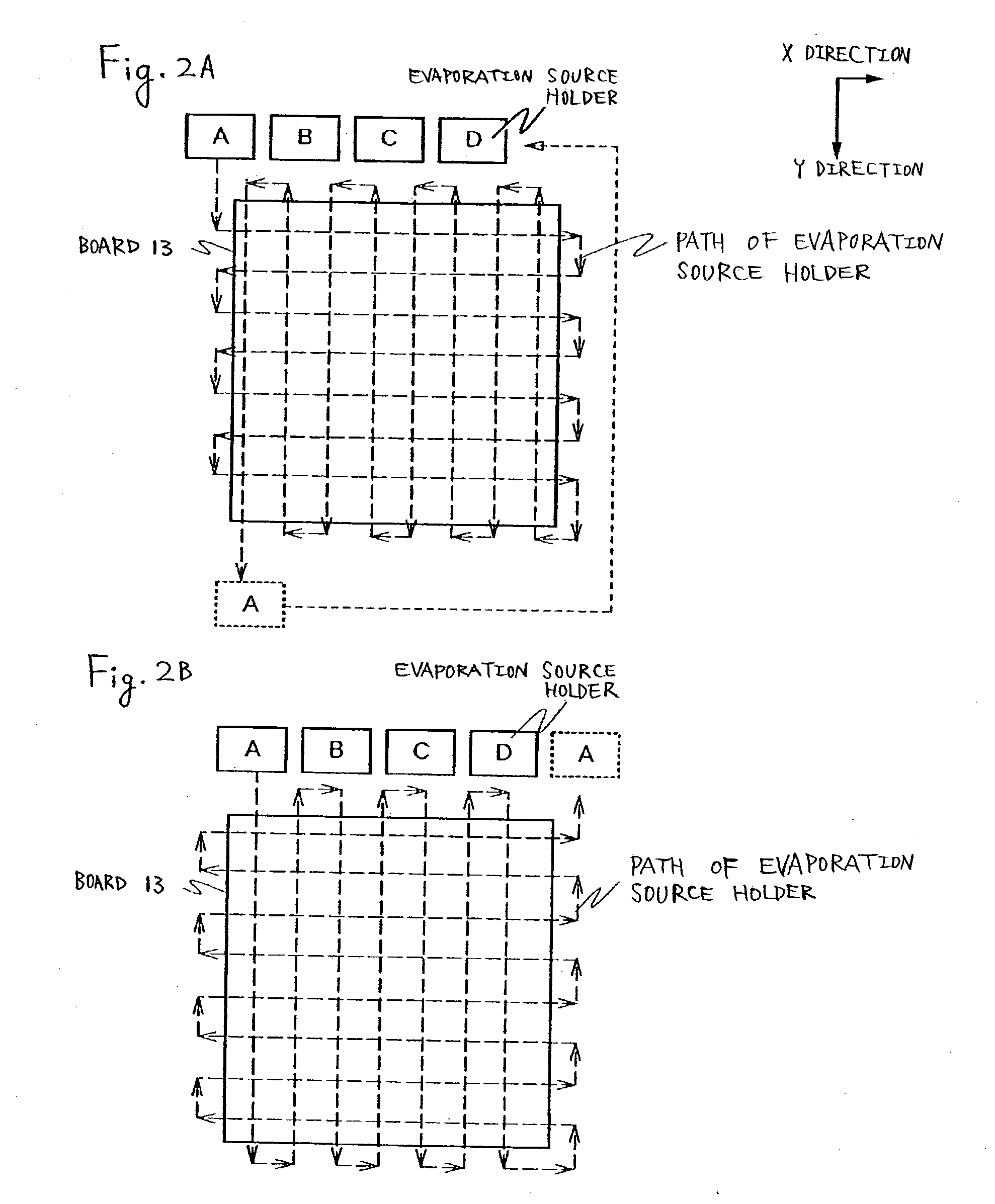Vapor deposition device
a technology of vapor deposition and luminescent devices, which is applied in the direction of vacuum evaporation coating, electroluminescent light sources, coatings, etc., can solve the problems of very high manufacturing cost of luminescent devices, low efficiency of utilizing expensive el materials, and 1%
- Summary
- Abstract
- Description
- Claims
- Application Information
AI Technical Summary
Benefits of technology
Problems solved by technology
Method used
Image
Examples
example 1
[0118] In this example, an example of forming TFT on a substrate having an insulating surface and forming an EL element, that is a light emitting element, is shown in FIG. 10. A cross-sectional view of one TFT that is connected to an EL element in a pixel portion is shown in this example.
[0119] A base insulating film 201 is formed by a lamination of insulating films such as a silicon oxide film, a silicon nitride film or a silicon oxynitride film on a substrate 200 having an insulating surface. Although the base insulating film 201 herein uses a two-layer structure, it may use a structure having a single layer or two layers or more of the insulating films. The first layer of the base insulating film is a silicon oxynitride film formed to have a thickness of 10 to 200 nm (preferably 50 to 100 nm) by a plasma CVD using a reaction gas of SiH.sub.4, NH.sub.3 and N.sub.2O. Herein, a silicon oxynitride film is formed (composition ratio: Si=32%, O=27%, N=24% and H=17%) having a film thickn...
embodiment 3
[0134] In case of using vacuum-evaporation, as shown in Embodiment 3, a container (typically, a melting pot) in which an EL material that a vacuum-evaporation material is stored in advance by a material maker is set in a deposition chamber. Preferably, the melting pot is set in the deposition chamber while avoiding contact with the air. A melting pot shipped from a material maker is preferably sealed in a second container during shipment and is introduced into a deposition chamber in that state. Desirably, a chamber having vacuum exhaust means is connected to the deposition chamber (installing chamber), the melting pot is taken out of the second container in vacuum or in an inert gas atmosphere in this chamber, and then the melting pot is set in the deposition chamber. In this way, the melting pot and the EL material stored in the melting pot are protected from contamination.
[0135] Next, a second electrode 219 is formed as a cathode on the light-emitting layer. The second electrode ...
example 2
[0153] According to the example, FIG. 12 shows an example of a fabricating device of a multichamber system fully automating fabrication of from a first electrode to sealing.
[0154] FIG. 12 shows a multichamber fabricating device having gates 10a through 100x, a preparing chamber 101, a take-out chamber 119, carrying chambers 102, 104a, 108, 114 and 118, delivery chambers 105, 107 and 111, deposition chambers 106R, 106B, 106G, 106H, 106E, 109, 110, 112 and 113, installing chambers for installing evaporation sources 126R, 126G, 126B, 126E and 126H, a pretreatment chamber 103, a sealed board loading chamber 117, a sealing chamber 116, cassette chambers 111a and 111b, a tray mounting stage 121, a cleaning chamber 122, a baking chamber 123 and a mask stock chamber 124.
[0155] A procedure of carrying a board previously provided with a thin film transistor, an anode and an insulator for covering an end portion of the anode to the fabricating device shown in FIG. 12 and fabricating a luminesc...
PUM
| Property | Measurement | Unit |
|---|---|---|
| height | aaaaa | aaaaa |
| height | aaaaa | aaaaa |
| height | aaaaa | aaaaa |
Abstract
Description
Claims
Application Information
 Login to View More
Login to View More - R&D
- Intellectual Property
- Life Sciences
- Materials
- Tech Scout
- Unparalleled Data Quality
- Higher Quality Content
- 60% Fewer Hallucinations
Browse by: Latest US Patents, China's latest patents, Technical Efficacy Thesaurus, Application Domain, Technology Topic, Popular Technical Reports.
© 2025 PatSnap. All rights reserved.Legal|Privacy policy|Modern Slavery Act Transparency Statement|Sitemap|About US| Contact US: help@patsnap.com



